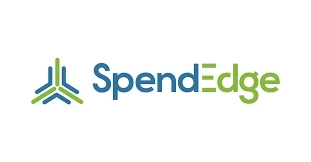Originally published by Spendedge: Elevate Procurement Efficiency with Procurement Category Strategy. SpendEdge Shows the Way
The Significance of a Procurement Category Roadmap
A well-designed procurement category roadmap is pivotal for aligning category management with overarching business goals. It serves as a strategic guide to uncover value-creating opportunities and manage procurement categories effectively. This roadmap, which includes both direct and indirect procurement, ensures that category objectives are in harmony with the company's broader targets. By highlighting potential opportunities and risks, improving supplier relationships, and achieving tangible outcomes, the roadmap helps streamline complexities and unlock significant value.
Core Elements of a Procurement Category Roadmap
Assess the Current Situation
Evaluate current performance, challenges, and opportunities within the procurement category using tools like SWOT and PESTLE analyses, and gather feedback from stakeholders.Define clear, measurable goals and anticipated outcomes for the desired future state, ensuring they align with the overall business objectives. Estimate the benefits to be gained.Identify Gaps and Opportunities
Identify discrepancies between the current state and the desired future state. Focus on areas with the highest potential for improvement and innovation, prioritizing based on their impact and feasibility.Develop an Action Plan
Create a detailed action plan that outlines the tasks, resources, responsibilities, and timelines needed for category transformation. Use project management tools like RACI matrices and Gantt charts to effectively track and manage progress.Execute and Communicate the Plan
Obtain stakeholder approval and support through effective change management and communication strategies.Continuously monitor progress, evaluate outcomes, and adjust the strategy as needed based on performance metrics, market trends, and stakeholder feedback. Employ dashboards, scorecards, and reports for effective tracking.Essential Skills for Effective Category Management
Successful category management requires expertise in market analysis, strategic planning, and relationship management. Training and involving all stakeholders in the process are crucial. Centralizing data, leveraging advanced analytics, and integrating data across procurement functions are essential for generating actionable insights.
Aligning Stakeholder Interests
Balancing the diverse needs and expectations of stakeholders—such as business units, management, end-users, and suppliers—can be complex. Effective communication, understanding stakeholder motivations, and finding common ground are key to achieving alignment. Addressing resistance to change, clearly communicating benefits, and securing support are vital for successful implementation. Comprehensive documentation of processes, roles, and responsibilities helps streamline this effort.
Managing Risks and Uncertainties
Category management involves risks such as supply disruptions, quality issues, price fluctuations, contract disputes, and regulatory challenges. To manage these risks, conduct thorough risk assessments, develop contingency plans, monitor key performance indicators, and implement corrective actions. Finding the right balance between standardized processes and flexibility is crucial; too much standardization can limit adaptability, while excessive flexibility may lead to inconsistencies.
How SpendEdge Can Help
SpendEdge Central offers valuable insights and tools to enhance category management. With updated reports on various spend areas—including agro commodities, chemicals, IT, and logistics—category managers can access detailed data essential for effective strategy development. Reports are refreshed every six months to ensure they reflect the latest information.
Key Advantages:
Detailed Insights: Access comprehensive information at all stages of category management, including market trends, pricing, cost-saving opportunities, and best practices.Broad Perspective: SpendEdge Central also provides AI-driven tools for monitoring supplier risks, tracking macroeconomic factors, and more, in addition to category intelligence.Case Study: For example, a North American pharmaceutical company utilized SpendEdge Central to revamp its category strategy across 20 spend areas, benefiting from tailored insights and comprehensive support for strategy development and execution.SpendEdge’s solutions are designed to enhance procurement efficiency and support businesses in achieving their strategic goals through detailed insights and ongoing assistance.


